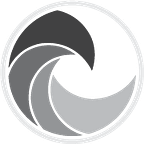SPL Weightings and When to Use Them
In the everyday life of a sound designer, there is one essential element that plays a crucial role in the way we perceive and experience audio, a key variable, the Sound Pressure Level (SPL); a fundamental measurement that allows us to quantify the intensity of a sound in the acoustic environment. From the gentle whisper of a breeze to the deafening roar of an engine, SPL provides a quantitative basis for understanding and communicating the amplitude and power of these sound phenomena.
So, let’s discuss what Sound Pressure Level is, how it is measured, and why it is a fundamental concept in sound design, as well as its importance in several applications, from creating immersive environments in the entertainment industry to hearing protection in industrial settings.
Read also: Common sound problems with low-budget films
Sound Pressure Level (SPL), is expressed in decibels (dB), meaning, it is a measure of loudness. This intensity varies according to the air pressure generated by the sound wave, quantified in decibels as a reference value. The maximum SPL, expressed in dB, appears in details of professional audio systems, such as Shure microphones and Bose loudspeakers, ensuring transparency to consumers.
As you may know, the decibel (dB) is the unit of measurement for sound intensity (and other physical quantities), so, the dB SPL logarithmic scale refers to the lowest sound pressure level perceptible to the human ear. The sound pressure level is measured in A-weighted decibels (dB(A)) to adjust how the human ear perceives different frequencies. It ranges from the threshold of hearing (0 dB) to the threshold of pain (120 dB). These decibels help to handle the wide range of pressures using logarithmic calculations.
The relationship between SPL and human hearing lies in how movements generate audible waves, intensifying with more pronounced movements and vice versa. The threshold of hearing is measured in dB HL (Hearing Level), while the intensity of sound is measured in dB SPL. An SPL above 65 dB can cause damage according to the World Health Organization (WHO). Sound Pressure Level (SPL) is essential in sound design because of its impact on the creation and perception of auditory experiences. In fields such as entertainment, it allows control of the intensity of sound elements to create appropriate atmospheres and immerse the audience in fictional worlds. In addition, SPL communicates emotions and spatial directions, giving depth to soundscapes and dynamism to narratives. It also influences hearing health, ensuring that products and environments do not exceed safe sound pressure levels.
Moreover, Sound Pressure Level (SPL) is of crucial importance in a variety of applications ranging from film, television, commercials, or video games, to occupational safety and urban planning. In entertainment, SPL is a mainstay for creating immersive environments in movies and video games, generating emotions and enriching narratives. In live events, SPL control ensures a consistent, high-quality listening experience for all attendees.
Now, in noisy industrial environments, SPL becomes relevant to protect workers’ hearing by limiting exposure to harmful noise levels. Furthermore, in urban planning, SPL management contributes to the design of more pleasant and healthy public spaces. Finally, in the field of acoustic research, SPL is essential for analyzing noise effects on human health and the environment. Its accurate measurement allows us to better understand these phenomena and develop appropriate solutions.
There are eight basic principles you should always keep in mind if you don’t want SPL to be an issue in your sound design:
1. Understand the logarithmic scale:
SPL is measured on a logarithmic scale, meaning that each 10 dB increase represents a tenfold increase in sound intensity. Understanding this scale is essential to correctly interpret differences in sound pressure levels.
2. Know the reference values:
The human hearing threshold is generally set at 0 dB SPL, while the pain threshold is around 120 dB SPL. Familiarize yourself with these reference values to get an idea of the range of sound intensities covered by SPL.
3. Use SPL meters:
Employ SPL meters to measure and monitor sound pressure levels in different environments. These devices will help you understand how SPLs vary in different situations and make informed decisions about necessary adjustments.
4. A and C weighting:
SPL meters often have A- and C-weighting options. A-weighting simulates the way the human ear perceives different frequencies, which is useful for measuring noise levels more relevant to human hearing. C-weighting is flatter and suitable for general sound pressure level measurements.
5. Hearing protection:
Understand how SPL levels affect human hearing. Know the safe exposure limits according to the guidelines of health and safety organizations, and wear appropriate hearing protection in noisy environments.
6. SPL manipulation in sound design:
Learn how to use SPL creatively in the creation of sound environments, adjusting levels to achieve specific effects, emotions, and narratives.
7. Study of regulations and standards:
Research local and regional regulations and standards related to noise and sound pressure levels. This is especially important in areas such as urban planning and occupational safety.
8. Practice and experience:
Practice is essential. Take measurements in different environments and conditions to develop a deeper understanding of how SPLs change and how they affect our listening experiences.
If you are interested in this and other topics, do not miss the contents of our blog; and, if you want professional advice from experts for your audiovisual projects for film, television, commercials, or video games, do not hesitate to contact Enhanced Media Sound Studio!
